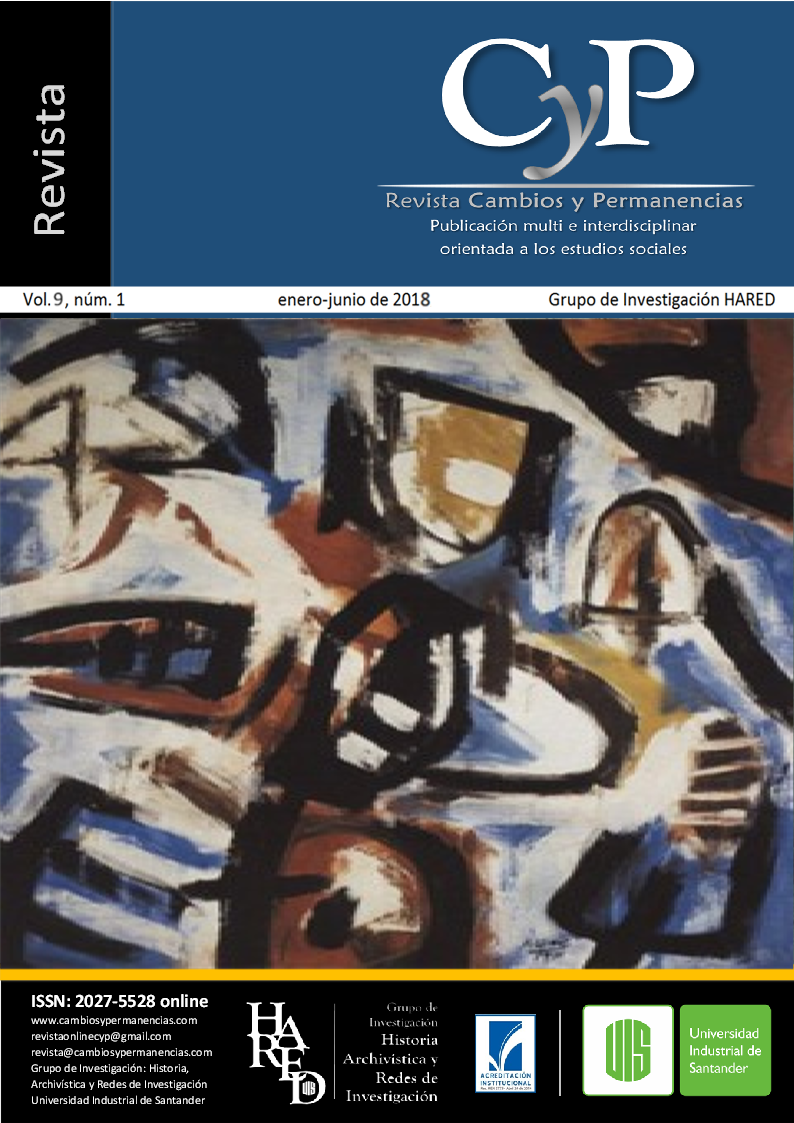Understanding of oneself from the narration of evil, the autobiographical text of the adolescent judicialized
Published 2018-06-01
Keywords
- Identity,
- narrative,
- life history,
- personal experience,
- deprivation of liberty sentences
How to Cite
Abstract
Some conclusions of the research entitled "Building narrative identity through the autobiographical text in young people deprived of freedom" are presented in this paper, in which writing is approached as a creator of meanings versus impressions and images thrown by the everydayness The study population is the case of some young people who are under the system of criminal responsibility (PACU), where the act of autobiographical narrative text production behaves as a mechanism of re-knowledge and memory, both individually and collectively; something that can be approached theoretically from the perspective of Paul Ricoeur (1988). Now, from the results of the intervention it is observed that the autobiographical narratives show the limit of the own action and the scope of the own will, allowing the men to re-know each other; for this reason it is possible to consider that in this case, telling evil is an imperative to create spaces of intersubjectivity that allow the understanding of the other, especially within the framework of our complex Colombian society, where indifference to cruelty prevails.
Downloads
References
Camarotti, J. (2000). Narrativa autobiográfica y construcción de la identidad. Editorial Universidad de Brasilia.
Di Leo, P. F, Kornblit, A. M., y Camarotti, A. C. (2011). Prevención del consumo problemático de drogas. Argentina: Programa Nacional EPA y CID.
Greimas, A. (1982). Semiótica y lenguaje: diccionario analítico. Bloomington: Indiana University Press.
Holguín, G. (2014). Arqueología del adolescente infractor de la Ley Penal en Bogotá (1837-2012). Bogotá: Universidad Nacional de Colombia.
Instituto de Bienestar Familiar, Ministerio del Interior y de Justicia y Dirección Nacional (2010) Estudio Nacional de Consumo de Sustancias Psicoactivas en Adolescentes en Conflicto con la Ley en Colombia. Bogotá D.C.
Kessler G. (2002) Violencias, delitos y justicias en la Argentina. Buenos Aires: Manantial.
Levi, P. (1988). El deber de la memoria. Madrid: Alianza Editorial.
Ley 98 de 1920 con al cual se crean los primero Tribunales para menores en Colombia.
Ley 2737 de 1989 o Código del menor el cual rigió en nuestro país por más de una década.
Ley 1098 de 2006 en su aparte que da cuenta del Sistema de Responsabilidad Penal Juvenil y otros aspectos que atañen a la familia.
Ley 375 de Julio 4 de 1997. Por la cual se crea la ley de la juventud y se dictan otras disposiciones.
Miron, L. (2005). Jóvenes delincuentes, Barcelona: Ariel S.A.
Martucelli, D. (2013). Sociología del individuo, subjetivación e individualización. Archivos de ciencias de la educación. Argentina: Universidad nacional de la plata.
Melich, J. (1961). Lógica de la crueldad / Joan-Carles Mèlich. (2014) Barcelona: Editorial: Herder.
Pía Lara, M. (2009). Narrar el mal: Una teoría pos metafísica del juicio reflexionante. Barcelona: Editorial Gedisa.
Organización de las Naciones Unidas – ONU (1985). Recuperado de http://www2.ohchr.org/spanish/law/reglas_beijing.htm. Consulta del 13 de febrero de 2017
Oropeza, R. (2001). El discurso-testimonio y otros ensayos. México: UNAM.
Ricoeur, P. (2003). Sí mismo como otro. México: Siglo Veintiuno Editores.
Ricoeur, P. (1995). Tiempo y narración. México: Siglo Veintiuno.
Reguillo, R. (2002). Cuerpos juveniles, políticas de identidad. En C. Feixa, F. Molina y C. Alsinet (editores). Movimientos juveniles en América Latina: pachucos, malandros, punketas. Barcelona: Ariel.
Rodríguez, J. A. (2004). Narratología: para el estudio y disfrute de las narraciones. Bogotá: Universidad Pontifica Javeriana.
Sistema de Responsabilidad Penal para Adolescentes (2011). Reporte Mensual de Novedades de las Instituciones. Bogotá D. C: .Instituto Colombiano de Bienestar Familiar.
Taylor, S. (1987) Introducción a los métodos cualitativos de investigación. Barcelona: Paidós
Taylor, C. (1993). La política del reconocimiento. Ch. Taylor, El multiculturalismo y la “política del reconocimiento”. México: Fondo de Cultura Económica.
Todorov, T. (1993). Frente al límite. Editorial: México: Siglo Veintiuno Editores.
Troconis, F. (1912). Apuntaciones sobre la mortalidad infantil en Bogotá. Bogotá: Imprenta de J. Casis. Universidad Nacional de Colombia.


